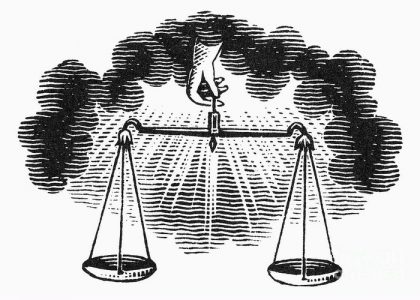In “Romeo and Juliet,” Juliet opines “What’s in a name? That which we call a rose by any other name would smell as sweet.” What Shakespeare seems to tell us is that words matter. So too do they matter in reporting, particularly in reporting on protests, rallies, demonstrations, and riots in which race is implicated. In this kind of reporting, how journalists frame participants can shape how the public views them and the causes they support. This is due to the normative baggage that each descriptor may carry. We may, for example, be more sympathetic to “protesters” than to “rioters;” or more supportive of the “alt-right” than to “neo-Nazis.” Thus, to be transparent and unbiased, journalists must be careful in their uses of such meaning-laden terms.
One recent study of Texas newspapers reveals the problems of using loaded terminology. Danielle Kilgo and Summer Harlow examined 777 articles written by journalists in 20 different Texas newsrooms (see “Riot or resistance? The way the media frames the unrest in Minneapolis will shape the public’s view of protest”). Looking at how articles framed protests in the headline, opening sentence, and story structure, they classified the reporting using four frames of protest: riot (wherein reporting emphasized disruptive behavior); confrontation (reporting that described protests as combative, focusing on arrests); spectacle (reporting that focused on apparel, signs or emotional behavior of protesters); and legitimizing (where reporting substantially mentioned protester’s demands, goals and grievances). Kilgo and Harlow found that Texas reporters were more likely to write positively about protests related to health and immigration, and more likely to write negatively about protests related to anti-black racism and the Dakota pipeline (see below).

Harlow found a similar pattern in her own research of 1,500 protest-related news stories published throughout 2014 in mainstream, alternative, partisan and online news publications (see “There’s a double-standard in how news media cover liberal and conservative protests”). “Articles about conservative protests,” she writes, “like protests opposed to immigration or LGBT rights, or protests supporting Trump and gun rights––[were] less likely to be negatively framed as ‘riots’ than other types of protests. In contrast, Black Lives Matter protests [were] more likely to be framed as riots, as news coverage focuse[d] more on violence, property damage and confrontations with police.” Although Harlow’s reporting is framed in political terms as liberal versus conservative, her reference to how BLM protests tended to be framed is telling: protests involving anti-black racism were not good.
The same semantic difficulties can be seen in reporting dealing with white supremacists and neo-Nazi groups. Issie Lapowski writes that reporting that frames white supremacist groups as among the “alt-right” seems to soften them by obscuring ideologies that might otherwise be unpalatable (see “New Media and the Messy Nature of Reporting on the Alt-Right”). Referring to such groups as “neo-Nazis” on the other hand, Lapowski seems to suggest, might make them less endearing to readers and less worthy of support. Of course, as J.M. Berger points out, there may be fundamental differences between the alt-right and neo-Nazis in the first place, so journalists wishing to demonstrate “analytical utility” would likely need to use the two terms differently anyway (see “Calling Them Nazis”). Regardless, even the Associated Press has seen the need for journalists to be more precise when reporting on racially sensitive groups including white supremacists, white nationalists, neo-Nazis, and the alt-right, presumably for the possible effects that such loaded terminology may have on shaping public opinion (see “Writing about the ‘alt-right’”).
It must be said that without conducting focused research on how such racially charged language may influence public perceptions of race and racial issues, the true impact of this kind of reporting will not be known. However, it wouldn’t be a stretch to think that such framing must have some effect on public opinion. After all, consumers of news––as human beings––can be quite pliable, if not completely suggestible. For journalists interested in producing truly transparent and unbiased reporting, it seems the moral mandate is to recognize that words, like calling a rose a rose, do matter.
Editor’s Note (March 31, 2021): In class discussion today, we learned that–based on the 2018 edition of the AP Style Guide–the AP does not offer guidance on how to use such terms as “terrorism” or “domestic terrorism” and only vague, recently published guidance on use of the word “insurrection” (see “How to describe the events at the U.S. Capitol”).
